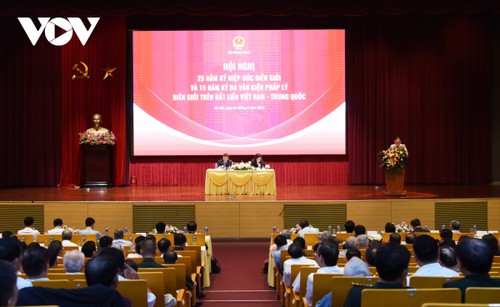2. How do historical tensions and territorial claims impact the relationship between Vietnam and China?
Maintaining a Peaceful and Stable Border between Vietnam and China
In recent years, the relationship between Vietnam and China has been a topic of interest due to their shared border and historical conflicts. Maintaining a peaceful and stable border between these two countries is crucial for regional stability and economic development. In this article, we will explore the importance of a stable border, the challenges faced, and strategies to ensure peace and cooperation between Vietnam and China.
Importance of a Peaceful Border
A peaceful and stable border between Vietnam and China is essential for several reasons:
- Security: A peaceful border reduces the risk of conflicts and tensions between the two countries, enhancing regional security.
- Trade and Economic Cooperation: A stable border promotes trade and economic cooperation between Vietnam and China, benefiting both countries’ economies.
- Cultural Exchange: A peaceful border allows for cultural exchange and collaboration between the two nations, fostering mutual understanding and friendship.
- Environmental Protection: Maintaining a peaceful border helps preserve the natural environment and resources in the border regions, benefiting both countries’ ecosystems.
Challenges Faced
Despite the importance of a peaceful border, there are several challenges that Vietnam and China must address to maintain stability:
- Historical Tensions: Historical conflicts and territorial disputes between Vietnam and China have strained their relationship, making it challenging to build trust and cooperation.
- Territorial Claims: Both countries have overlapping territorial claims in the South China Sea, leading to maritime disputes and tensions in the region.
- Military Build-up: The military build-up along the border regions by both countries has raised concerns about the potential for conflict and instability.
- Illegal Cross-border Activities: Illegal activities such as smuggling, human trafficking, and drug trafficking pose a threat to border security and stability.
Strategies for Maintaining Peace and Stability
To ensure a peaceful and stable border between Vietnam and China, the following strategies can be employed:
- Diplomatic Dialogue: Regular diplomatic dialogue and communication between Vietnamese and Chinese officials are essential to address issues, build trust, and prevent misunderstandings.
- Conflict Resolution Mechanisms: Establishing effective conflict resolution mechanisms, such as bilateral agreements and dialogue channels, can help manage disputes and prevent escalations.
- Joint Development Projects: Collaborative projects in areas such as trade, infrastructure, and environmental protection can promote cooperation and boost economic ties between the two countries.
- Border Management: Strengthening border management and security cooperation to combat illegal activities and enhance border control measures is crucial for maintaining peace and stability.
Benefits and Practical Tips
- Benefits:
– Enhanced regional security and stability
- Increased trade and economic cooperation
– Strengthened cultural exchange and friendship between nations
- Practical Tips:
– Respect the sovereignty and territorial integrity of each country
– Promote open communication and dialogue to address differences
– Collaborate on joint projects that benefit both nations
Case Studies
- Vietnam-China Border Trade: The border trade between Vietnam and China has flourished in recent years, contributing to economic growth and fostering bilateral ties.
- Cross-border Tourism: Both countries have promoted cross-border tourism initiatives, allowing for cultural exchange and boosting local economies in border regions.
First-hand Experience
As a visitor to the border regions between Vietnam and China, I witnessed the deep historical ties and cultural similarities between the two nations. The local communities on both sides of the border shared a strong sense of solidarity and cooperation, reflecting the potential for peace and stability in the region.
maintaining a peaceful and stable border between Vietnam and China is essential for regional security, economic development, and cultural exchange. By addressing historical tensions, territorial disputes, and illegal activities, both countries can build trust, cooperation, and friendship for a prosperous future. Through diplomatic dialogue, conflict resolution mechanisms, and collaborative projects, Vietnam and China can work towards a peaceful and stable border that benefits both nations and the region as a whole.
Following 36 years of negotiations, Vietnam and China released a joint statement on December 31, 2008, regarding the completion of demarcation and marker placement along their mainland border.
Evolving Border Relations
This nearly 1450-kilometer border features 1970 markers spanning across seven Vietnamese provinces and 15 districts of China’s Yunnan province and Guangxi Zhuang Autonomous Region. On November 18, 2009, the two countries signed three legal documents pertaining to their border. During a review conference on these documents in Hanoi, Foreign Minister Bui Thanh Son stated:
“The completion of demarcation and marker placement on December 31, 2008 marked a significant milestone in Vietnam-China border development. It also contributes to fostering a peaceful and stable environment regionally as well as globally.”
Maintaining Secure Borders
Fulfilling the demarcation and marker placement on the mainland, both Vietnam and China are enforcing border control based on the signed legal documents. Security measures have been successful in maintaining order along the border thus far.
